
Duncan Idaho is a fictional character in the Dune universe created by Frank Herbert. He was introduced in the first novel of the series, 1965's Dune, and became a breakout character. He was revived in 1969's Dune Messiah. He is the only character to feature in all six of Herbert's original Dune novels.
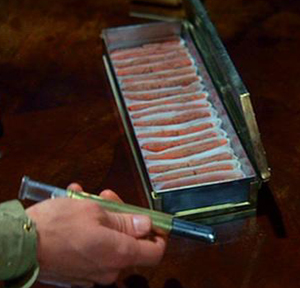
Melange, often referred to as "the spice", is the fictional psychedelic drug central to the Dune series of science fiction novels by Frank Herbert and derivative works.

The Fremen are a group of people in the fictional Dune universe created by Frank Herbert. First appearing in the 1965 novel Dune, the Fremen inhabit the desert planet Arrakis, which is the sole known source in the universe of the all-important spice melange. Long overlooked by the rest of the Imperium and considered backward savages, they are an extremely hardy people and exist in large numbers. The Fremen had come to the planet thousands of years before the events of the novel as the Zensunni Wanderers, a religious sect in retreat. As humans in extremis, over time they adapted their culture and way of life to survive and thrive in the incredibly harsh conditions of Arrakis. The Fremen are distinguished by their fierce fighting abilities and adeptness at survival in these conditions. With water being a rare commodity on the planet, their culture revolves around its preservation and conservation. Herbert based Fremen culture, in part, on the desert-dwelling Bedouin and San People.

The Spacing Guild is an organization in Frank Herbert's science fiction Dune universe that possesses a monopoly on interstellar travel and banking. Guild Navigators use the drug melange to achieve limited prescience, a form of precognition that allows them to successfully navigate "folded space" and safely guide enormous starships called heighliners across interstellar space instantaneously.

Arrakis —informally known as Dune and later called Rakis—is a fictional desert planet featured in the Dune series of novels by Frank Herbert. Herbert's first novel in the series, 1965's Dune, is considered one of the greatest science fiction novels of all time, and it is sometimes cited as the best-selling science fiction novel in history.

Lady Jessica is a fictional character in the Dune universe created by Frank Herbert. A main character in the 1963–65 novel Dune, Jessica also plays an important role in the later installment Children of Dune (1976). The events surrounding Jessica's conception, her birth and her early years with Leto are chronicled in the prequel trilogies Prelude to Dune (1999–2001) and Caladan (2020–2022) by Brian Herbert and Kevin J. Anderson. The character is brought back as a ghola in the Herbert/Anderson sequels which conclude the original series, Hunters of Dune (2006) and Sandworms of Dune (2007).

Alia Atreides is a fictional character in the Dune universe created by Frank Herbert. She was introduced in the first novel of the series, 1965's Dune, and was originally killed in Herbert's first version of the manuscript. At the suggestion of Analog magazine editor John Campbell, Herbert kept her alive in the final draft. Alia would next appear as a main character in both Dune Messiah (1969) and Children of Dune (1976). The character is brought back as a ghola in the Brian Herbert/Kevin J. Anderson conclusion to the original series, Sandworms of Dune (2007).
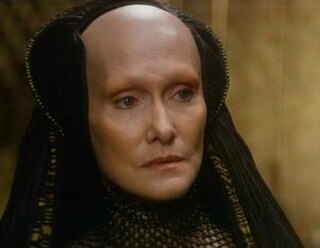
Gaius Helen Mohiam is a fictional character in the Dune universe created by Frank Herbert. She is a Bene Gesserit Reverend Mother, and initially appears in the 1963–65 novel Dune and its 1969 sequel, Dune Messiah. Mohiam also has a major role in the Prelude to Dune prequel trilogy (1999–2001) and the Caladan Trilogy (2020–2022) by Brian Herbert and Kevin J. Anderson.
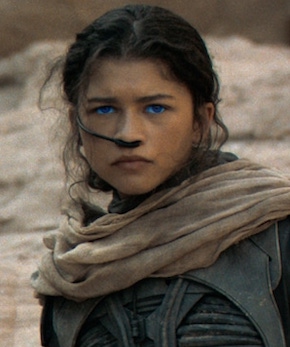
Chani is a fictional character featured in Frank Herbert's novels Dune (1965) and Dune Messiah (1969). Known mainly as the Fremen wife and legal concubine of protagonist Paul Atreides, Chani is the daughter of Imperial Planetologist Liet-Kynes and his Fremen wife Faroula, and later the mother of the twins Ghanima and Leto II Atreides. The character is later resurrected as a ghola, appearing in Hunters of Dune (2006) and Sandworms of Dune (2007), Brian Herbert and Kevin J. Anderson's novels which complete the original series.

Princess Irulan is a fictional character in the Dune universe created by Frank Herbert. She first appears in Dune (1965), and is later featured in Dune Messiah (1969) and Children of Dune (1976). The character's birth and early childhood are touched upon in the Prelude to Dune prequel trilogy (1999–2001) by Herbert's son Brian, and Kevin J. Anderson, and she is a principal character in the Herbert/Anderson series Heroes of Dune (2008–2009).
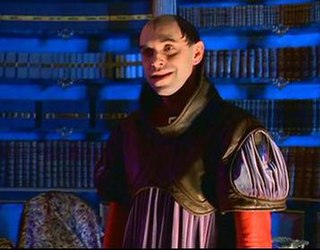
Count Hasimir Fenring is a fictional character in the Dune universe created by Frank Herbert. He is featured in the 1965 science fiction novel Dune by Frank Herbert, and is also a key character in the Prelude to Dune trilogy by Brian Herbert and Kevin J. Anderson. He later appears in the 2008 novel Paul of Dune, and the Caladan Trilogy (2020–2022).
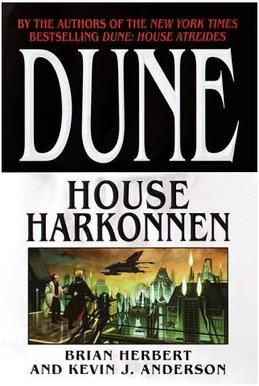
Dune: House Harkonnen is a 2000 science fiction novel by Brian Herbert and Kevin J. Anderson, set in the fictional Dune universe created by Frank Herbert. It is the second book in the Prelude to Dune prequel trilogy, which takes place before the events of Frank Herbert's celebrated 1965 novel Dune. The Prelude to Dune novels draw from notes left behind by Frank Herbert after his death.
Dune is an American science fiction media franchise that originated with the 1965 novel Dune by Frank Herbert and has continued to add new publications. Dune is frequently described as the best-selling science fiction novel in history. It won the inaugural Nebula Award for Best Novel and the Hugo Award in 1966 and was later adapted into a 1984 film, a 2000 television miniseries, and a two-part film series with the first film in 2021 and a sequel in 2024. Herbert wrote five sequels, the first two of which were concomitantly adapted as a 2003 miniseries. Dune has also inspired tabletop games and a series of video games. Since 2009, the names of planets from the Dune novels have been adopted for the real-world nomenclature of plains and other features on Saturn's moon Titan.

Dune: House Atreides is a 1999 science fiction novel by Brian Herbert and Kevin J. Anderson, set in the fictional Dune universe created by Frank Herbert. It is the first book in the Prelude to Dune prequel trilogy, which takes place before the events of Frank Herbert's celebrated 1965 novel Dune. Bantam Books made a $3 million deal for the novels in 1997. The Prelude to Dune novels draw from notes left behind by Frank Herbert before his death.

Margot, Lady Fenring is a fictional character from the Dune universe created by Frank Herbert. She is featured in Herbert's Dune (1965), and is a major character in the Prelude to Dune prequel trilogy (1999–2001) and the 2008 novel Paul of Dune by Brian Herbert and Kevin J. Anderson. She later appears in the Caladan Trilogy (2020–2022). Margot is the Bene Gesserit wife of Count Hasimir Fenring, a close friend of the Padishah Emperor Shaddam IV, but is loyal to the Sisterhood.
This is a list of terminology used in the fictional Dune universe created by Frank Herbert, the primary source being "Terminology of the Imperium", the glossary contained in the novel Dune (1965).
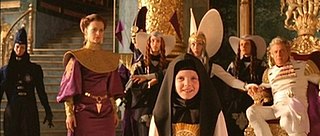
Multiple organizations of the Dune universe dominate the political, religious, and social arena of the setting of Frank Herbert's Dune series of science fiction novels, and derivative works. Set tens of thousands of years in the future, the saga chronicles a civilization which has banned computers but has also developed advanced technology and mental and physical abilities through physical training, eugenics and the use of the drug melange. Specialized groups of individuals have aligned themselves in organizations focusing on specific abilities, technology and goals. Herbert's concepts of human evolution and technology have been analyzed and deconstructed in at least one book, The Science of Dune (2008). His originating 1965 novel Dune is popularly considered one of the greatest science fiction novels of all time, and is frequently cited as the best-selling science fiction novel in history. Dune and its five sequels by Herbert explore the complex and multilayered interactions of politics, religion, ecology and technology, among other themes.
We've a three-point civilization: the Imperial Household balanced against the Federated Great Houses of the Landsraad, and between them, the Guild with its damnable monopoly on interstellar transport.

The Dune prequel series is a sequence of novel trilogies written by Brian Herbert and Kevin J. Anderson. Set in the Dune universe created by Frank Herbert, the novels take place in various time periods before and in between Herbert's original six novels, which began with 1965's Dune. In 1997, Bantam Books made a $3 million deal with the authors for three Dune prequel novels, partially based upon notes left behind by Frank Herbert, that would come to be known as the Prelude to Dune trilogy. Starting with 1999's Dune: House Atreides, the duo have published 15 Dune prequel novels to date.
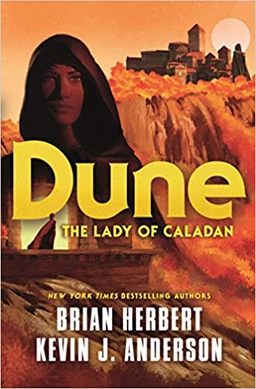
Dune: The Lady of Caladan is a 2021 science fiction novel by Brian Herbert and Kevin J. Anderson, set in the Dune universe created by Frank Herbert. It is the second book in the Caladan Trilogy of prequels. The novel was released on September 21, 2021, by Tor Books. It was preceded by Dune: The Duke of Caladan in October 2020, and was followed by Dune: The Heir of Caladan in October 2022.
















